2016 SUZUKI RM-Z250 MXA RACE TEST: EVERYTHING YOU NEED TO KNOW
Q: FIRST AND FOREMOST, IS THE 2016 RM-Z250 BETTER THAN THE 2015 RM-Z250?
A: If you’ve read the press releases and seen the ads, you know that the 2016 Suzuki RM-Z250 has undergone 80 mechanical upgrades this year. The expectations generated from such a wholesale R&D overhaul are very high; however, while the 2016 RM-Z250 is a virtually new machine from the ground up, it is not necessarily a better machine.
Q: WHAT ARE THE MAJOR CHANGES TO THE 2016 RM-Z250?
A: Believe us when we say that we can’t list all 80 changes and give them the amount of coverage that they deserve. Suffice it to say that Suzuki’s marketing department did a disservice to the 2016 RM-Z250 by saying it had 80 changes, because that makes it appear to be a reworking of an old engine. Instead, they should have said that it has a totally new, redesigned and refined engine. It’s not modified; it’s all-new. This is significant, because last year’s Suzuki RM-Z250’s list of improvements was limited to a silver stripe down the center of the seat cover and a black rear fender. Not the most noteworthy performance mods. But, don’t just take our word for it that the 2016 changes are major; here is a perfunctory list.
(1) Exhaust pipe. The head pipe is 40mm longer, and the muffler has a restrictor in the perf core to allow it to pass both the AMA Pro sound limits and the AMA Amateur regulations
(2) Top end. The piston, wrist pin, rings, connecting rod, cams, intake valves and compression ratio have been redone. The piston is shot peened. The wrist pin gets a DLC coating to reduce friction. The oil ring is L-shaped to seal better. The intake valves have slimmer stems, new lobes, flat-topped valve heads and are 2 grams heavier, but the buckets are lighter. Finally, the automatic decompression release has been redesigned on the end of the cam to improve engine starting.
(3) Crank. The crank halves are 0.5mm smaller in diameter to keep them from dragging through the engine oil in the bottom of the crankcase. Additionally, the oil passage that leads to Suzuki’s unique reed valve pressure relief valve has been enlarged. While the smaller crank is lighter, the magneto rotor has a 9-percent increase in inertia (which was achieved by moving the weight to its outer edge).
(4) Ignition couplers. Suzuki supplies two plug-in couplers to change the EFI mapping. The aggressive white coupler is 4-percent leaner and the mellower gray coupler is 4-percent richer. The stock mapping is achieved without a coupler (although you still have to put a protective cap over the electrical port).
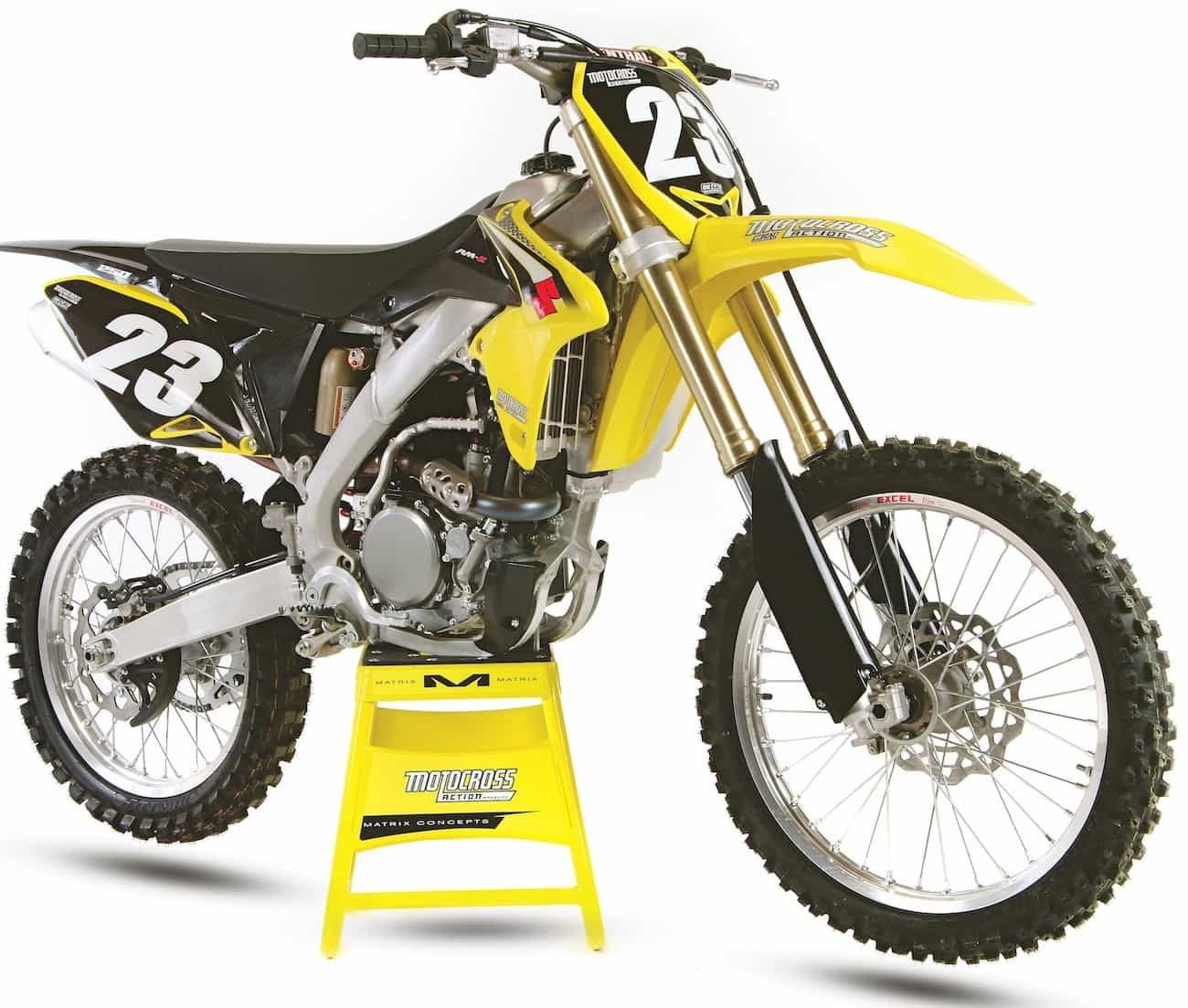 2016 Suzuki RM-Z250: With all the ballyhoo about the 80 engine changes for 2016, we expected the RM-Z250 powerplant to knock our socks off. It didn’t do that.
2016 Suzuki RM-Z250: With all the ballyhoo about the 80 engine changes for 2016, we expected the RM-Z250 powerplant to knock our socks off. It didn’t do that.
(5) Launch control. Suzuki’s Holeshot Assist Control, which has an acronym that sounds like a bad cough (S-HAC), is the most complex launch control system made. Unlike most systems that only offer a mellow map for concrete, the Suzuki has a stock map, mellow map and a “mildly aggressive” map. Why do we say that it is mildly aggressive? Because the stock map has the most aggressive setting, while the two S-HAC options are like Mama Bear’s and Baby Bear’s porridge. Equally creative is S-HAC’s timed release. From the moment it recognizes that the bike is moving, it retards the ignition for a better launch. Then, before the rear wheel hits the starting gate, it backs off the retardation to a middle ground setting and, finally, when the bike is headed down the start, it returns to the stock map. Total engagement time can be as little as 1.5 seconds.
(6) Frame. The 2016 RM-Z250 gets its version of the RM-Z450 frame, with a taller head tube, stronger frame cradle, redesigned webbing in the main spars and new mounting points for the subframe. The frame geometry is unchanged.
(7) Forks. Last year’s Showa SFF single-spring forks have been replaced with Kayaba PSF-2 air forks. The PSF-2 air forks, which are also found on the 2016 Honda CRF450, are 2.2 pounds lighter than the previous SFF single-spring forks. Suzuki will supply a free air pump to all 2016 RM-Z250 and RM-Z450 buyers until December 31, 2015. After that, RM-Z owners will have to buy the pumps (suggested retail is $74.95).
(8) Clutch cover. The clutch cover now has an oil-sight glass to make checking the oil level easier.
Q: WHAT WAS THE OUTCOME OF THE RM-Z250’S 80 ENGINE CHANGES ON THE DYNO?
A: New engines don’t come down the pike very often, so it was with great anticipation that we put the 2016 RM-Z250 on the dyno. Would you believe that the RM-Z250 engine didn’t gain any significant power over the previous 2015 engine, which was a carbon copy of the 2014 engine. That seems impossible. In order to double-check our dyno readings, we got a second brand-new 2016 RM-Z250 from a dealer and dyno’ed it. No-go! Neither bike showed any compelling horsepower increase. No big deal; we’ve tested bikes that performed poorly on the dyno but were good on the racetrack. After all, dynos don’t go to the starting line; they just give out cold, hard stats. Sadly, the stats were spot-on this time.
The 2016 Suzuki RM-Z250 produced 38.35 horsepower. That is the least horsepower of any 250cc four-stroke that we have dyno’ed in 2016. How far below the class-leading Husqvarna FC250 is the RM-Z250? The Husky FC250 makes 44.34 horsepower at peak, which is almost 6 horsepower more than the RM-Z250 at peak and 6.23 horsepower more at 13,000 rpm. Worse yet, the RM-Z250 doesn’t beat the second-worst dyno bike, the Honda CRF250, at any point on the curve. And, the Honda’s peak number is 38.89 to Suzuki’s 38.35.
What happened to the 80 all-new engine mods? We have two theories:
(1) In order to improve low-end power and the transition into the midrange, Suzuki increased flywheel inertia by 9 percent and lengthened the head pipe by 40mm. While these changes made very minor improvements to the power from 6000 rpm to 7000 rpm, they had a negative effect on top-end power.
(2) In order to meet the sound limits of both Pro and amateur racing, Suzuki’s engineers put a V-shaped strip of perf core into the muffler. It did a good job of knocking down the decibels but also killed throttle response and hampered the power across the range.
 Powerplant: The Suzuki overhauled the RM-Z250 engine, but on the track we left wanting more.
Powerplant: The Suzuki overhauled the RM-Z250 engine, but on the track we left wanting more.
Q: HOW FAST IS THE 2016 RM-Z250?
A: Disappointing. For clarity, MXA actually rode this engine in Japan last year while it was under development. What did we say after that first ride of the pre-pro engine? “From the very first twist of the throttle we were let down by our high expectations. Forgive us for thinking that a works Suzuki would be lightning fast. It wasn’t. In fact, all the AMA National race bikes that we have tested would blow the RM-Z250WS out of the water. Our feeling was that the powerband was less aggressive than the stock 2015 Suzuki RM-Z250 engine.” Given that assessment of the prototype 2016 RM-Z250 engine, we can’t say that we are surprised that the 2016 engine isn’t all that it could be. Perhaps Suzuki’s desire to build a tractable, easy-to-ride, forgiving powerband left them caught out when KTM went for broke with its high-horsepower, high-rpm engine. Additionally, Suzuki might have been lulled into complacency by Kawasaki’s, Yamaha’s and Honda’s willingness to play the game by the established rules, unaware that KTM isn’t a member of the good-old-boys social club. KTM and Husky went for the jugular with a 14,000 rpm bike that leapfrogged over the Japanese “Big Four” by 4 or more horsepower.
From this day forward, the rules have changed and the Suzuki RM-Z engine, albeit brand-new, is a Ford Taurus up against a Bugatti Veyron. It lacks throttle response, aggressive hit, adequate over-rev and competitive ponies. It is, at its best, a Novice engine.
Q: WHAT’S GOOD ABOUT THE RM-Z250 POWERBAND?
It picks up nicely off the bottom and has pep into the midrange. What’s bad about the 2016 RM-Z250 powerband? It is the only bike that we had to downshift to keep drive going on steep uphills.
Q: WHAT IS THE BEST ATTRIBUTE OF THE 2016 RM-Z250?
A: The 2016 RM-Z250 is a very fun bike to ride. It corners so well that MXA test riders are willing to overlook its engine’s failings just to dive inside of every rider on the track. It is the slot car of motocross bikes. It can hit any line in any turn, including spots that other bikes wouldn’t dare try; however, it should be noted that to dive inside of another rider going into a turn you have to catch him first and out-brake him second. Neither of these are likely scenarios with the Suzuki.
Q: WHAT WOULD WE DO TO IMPROVE THE 2016 SUZUKI RM-Z250?
A: First and foremost, we wouldn’t throw a boatload of money at it. The 2016 RM-Z250 is sitting in a very deep horsepower hole and not even Mega-Lotto dollars are going to dig it out. It has a 5-1/2-horsepower deficit to make up on the 2016 KTM 250SXF, and if you hopped the RM-Z250 up to close the gap, the KTM owner could make the same hop-ups to widen the gap again. Instead, this is a bike that needs a thoughtful approach to maximize return on investment.
(1) Slip-on. You could order a slip-on muffler from Pro Circuit, FMF or DR.D and get back the throttle response that the perf-core restrictor lost. Or, take a long punch and knock the V-shaped offender out of the way (we weren’t brave enough to do this).
(2) Gearing. If you want to go anywhere fast, you’ve got to perk up the midrange. The quickest way to do this is by adding one tooth to the rear sprocket.
(3) Couplers. The RM-Z250 couplers actually make a difference to the engine’s performance. We are particularly fond of the lean (white) coupler, but depending on your track conditions, the gray coupler or no coupler at all could be the cat’s meow. You can change the coupler in less than a minute, so take the time to test each one.
(4) Clutch. At the very least, install stiffer aftermarket clutch springs. It will save you money on clutch plates in the long run and build up your left forearm.
(5) Steering stem. Just because the RM-Z250 is the best-cornering bike in the class doesn’t mean that it’s the best handling bike. Overall handling performance is not based on cornering alone, but a combination of traits including straight-line stability, balance at speed and rough ground manners. Unfortunately, the RM-Z250 is not very stable at high speeds or through rough terrain. We always tighten down the steering stem to eliminate free-play in the front end. As a rule of thumb, we know that free-play needs to be taken out when the front end flops easily from side to side.
(6) Front tire. Most MXA test riders find the Dunlop Geomax MX52 to be very loose at turn-in. For our tracks, we run either a Dunlop MX32 or Bridgestone X30 front.
Q: HOW MUCH DOES THE 2016 RM-Z250 WEIGH?
A: The 2016 Suzuki RM-Z250 hits MXA’s trusty scales at 226 pounds (without gas in the tank). Compared to the 221-pound KTM 250SXF, 221-pound Yamaha YZ250F, 223-pound Husqvarna FC250 and 224-pound Honda CRF450, it is heavier. It does, however, weigh the same as the 2016 KX250F.
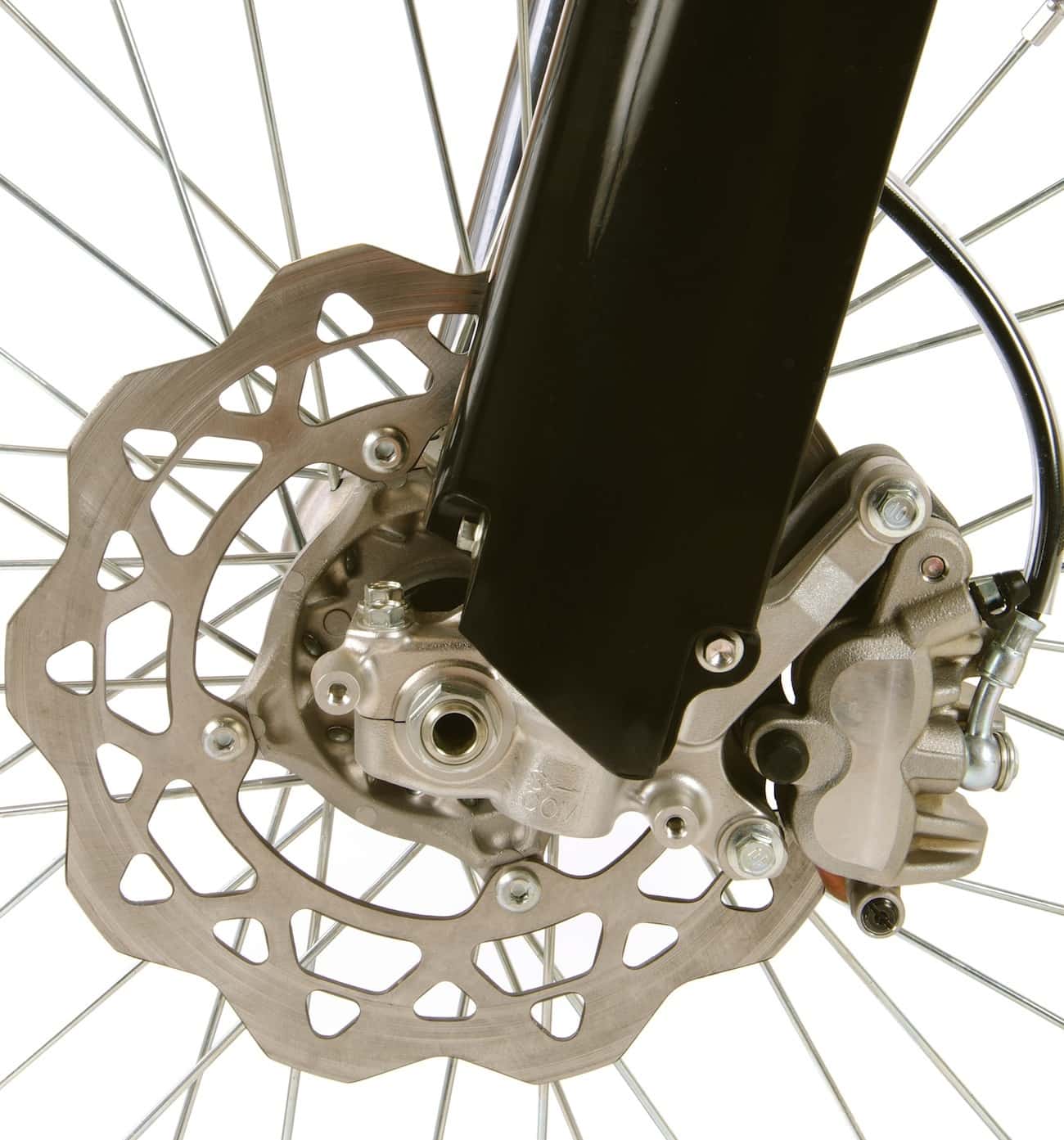 Tricycle: The Suzuki RM-Z250 has the stopping power of a tricycle compared to the competition.
Tricycle: The Suzuki RM-Z250 has the stopping power of a tricycle compared to the competition.
Q: WHAT DO WE HATE?
A: The hate list:
(1) Tires. Although the RM-Z250 is stepping up numerically from Dunlop MX51 tires to MX52s, we vastly prefer a Dunlop MX32 front to the MX52. We might even agree to return to the MX51 front.
(2) Aesthetics. If you own an older Suzuki RM-Z250, you can rejoice in knowing that your ancient warrior still looks like a 2016 model—save for the ill-conceived black rear fender. We don’t understand Suzuki’s aesthetic design. It would be the equivalent of every 2016 Ford looking like a 2008 Taurus.
(3) Clutch. What clutch?
(4) Brakes. Every manufacturer, save for Suzuki, switched to oversized front brake rotors in order to keep KTM’s awesome Brembo brakes in sight. The RM-Z250 has the weakest brakes on the showroom floor. To add insult to injury, we had overheating issues with the rear brake.
(5) Engine. This was a solid midrange engine in the past. Not anymore! The new crop of over-40-horsepower engines beat it in the midrange and romp all over it after 10,000 rpm.
(6) Launch control. The day that skilled riders need to detune the slowest 250cc four-stroke in order to get a good start is the day they need to take up Tiddlywinks.
 Mix-up: Most MXA test riders would prefer high- and low-speed compression clickers over rebound.
Mix-up: Most MXA test riders would prefer high- and low-speed compression clickers over rebound.
Q: WHAT DO WE LIKE?
A: The like list:
(1) Cornering. There’s no bike in the 250 class that can hit corners with more precision than the RM-Z250. It’s confidence inspiring.
(2) Couplers. We love plug-ins and prefer the white plug-in. Enough said.
(3) Suspension. We like the idea of low-pressure air forks like the RM-Z250’s Kayaba PSF-2 forks. Low-pressure forks have a single air chamber that only requires 35 psi instead of the TAC forks’ 170 psi. Kayaba PSF-2 air forks also come on the 2016 Honda CRF450. There is one major caveat: On the Suzuki RM-Z250, the clickers on both fork caps are for rebound damping only (both high- and low-speed). The compression clickers are on the bottom. The RM-Z250 forks work a lot better than their brethren on the CRF450.
Q: WHAT DO WE REALLY THINK?
A: It wasn’t that long ago that the Suzuki RM-Z250 won the “MXA 250 Shootout”—2011 to be exact. If the 2016 RM-Z250 engine is Suzuki’s engine of the future, it will be a long time before Suzuki wins again.
MXA’S SUZUKI RM-Z250 SETUP SPECS
This is how we set up our 2016 Suzuki RM-Z250 for racing. We offer it as a guide to help you get your own bike dialed in.
KAYABA PSF-2 FORK SETTINGS
Suzuki ran Showa SFF single-spring forks in 2013–’15, but for 2016 they have switched to Kayaba PSF-2 air forks. Suzuki’s version of PSF-2 forks differs from Honda’s in that the high-and low-speed rebound damping clickers are on the top of both fork caps, while the compression damping is on the bottom. Honda has its high- and low-speed compression clickers on one fork cap and its high- and low-speed rebound clickers on the other. For hard-core racing, these are MXA’s recommended 2016 Suzuki RM-Z250 fork settings (stock settings are in parentheses):
Spring rate: 34 psi (35 psi)
Compression (bottom of fork): 7 clicks out
Hi-rebound (silver): 15 clicks out
Lo-rebound (red): 16 clicks out
Fork-leg height: Flush
Notes: Once you find the correct air pressure setting for your weight, speed and track, focus on making all the adjustments with the compression clickers first, the low-speed rebound clickers second and high-speed rebound last. Given our druthers, we would prefer to have high- and low-speed compression damping instead of Suzuki’s focus on incremental rebound damping.
KAYABA SHOCK SETTINGS
For hardcore racing, these are MXA’s recommended 2016 Suzuki RM-Z250 fork settings (stock settings are in parentheses):
Spring rate: 5.5 kg/mm
Race sag: 105mm
Hi-compression (blue): 9 clicks out
Lo-compression (silver): 10 clicks out
Hi-rebound (bottom of shock): 17 clicks out
Lo-rebound (red): 11 clicks out
Notes: The 5.5 kg/mm spring might be a little stiff for minicycle transplants, but use free sag as your gauge. Check the race sag at regular intervals throughout the life of the machine. Don’t discount the shock when it comes to handling. If it is too stiff or the race sag too little, the RM-Z250 can go from a sweet-handling machine to a yellow ogre. Balance the front and rear with careful setup. Plus, we prefer shocks with the rebound clicker on the bottom clevis—not because we like kneeling in the dirt, but because they are more efficient down there.Although th pinwheel effect of the multiple clickers on the top of the shock does look cool.
MXA FIRST RIDE: 2016 SUZUKI RM-Z250




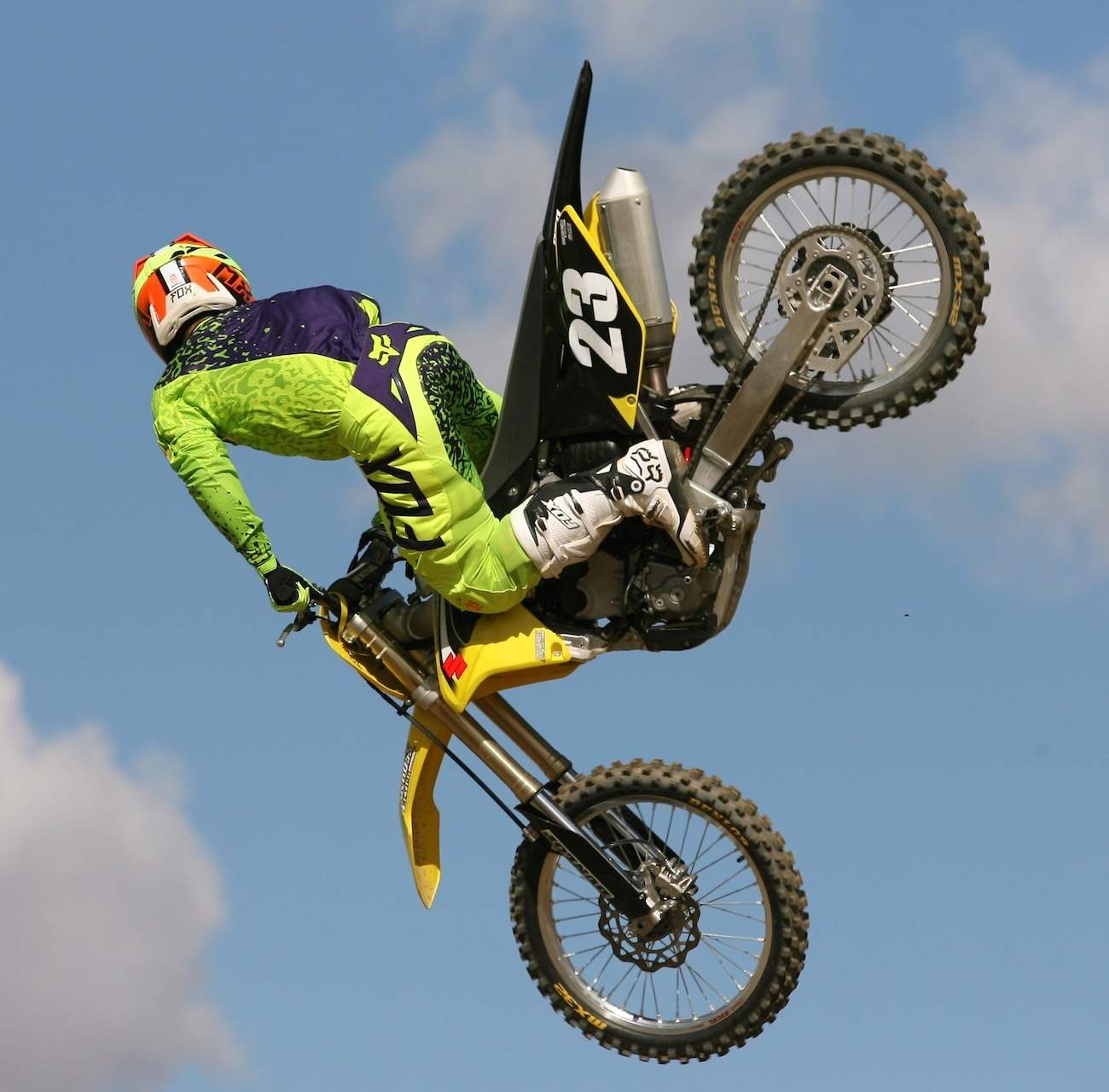
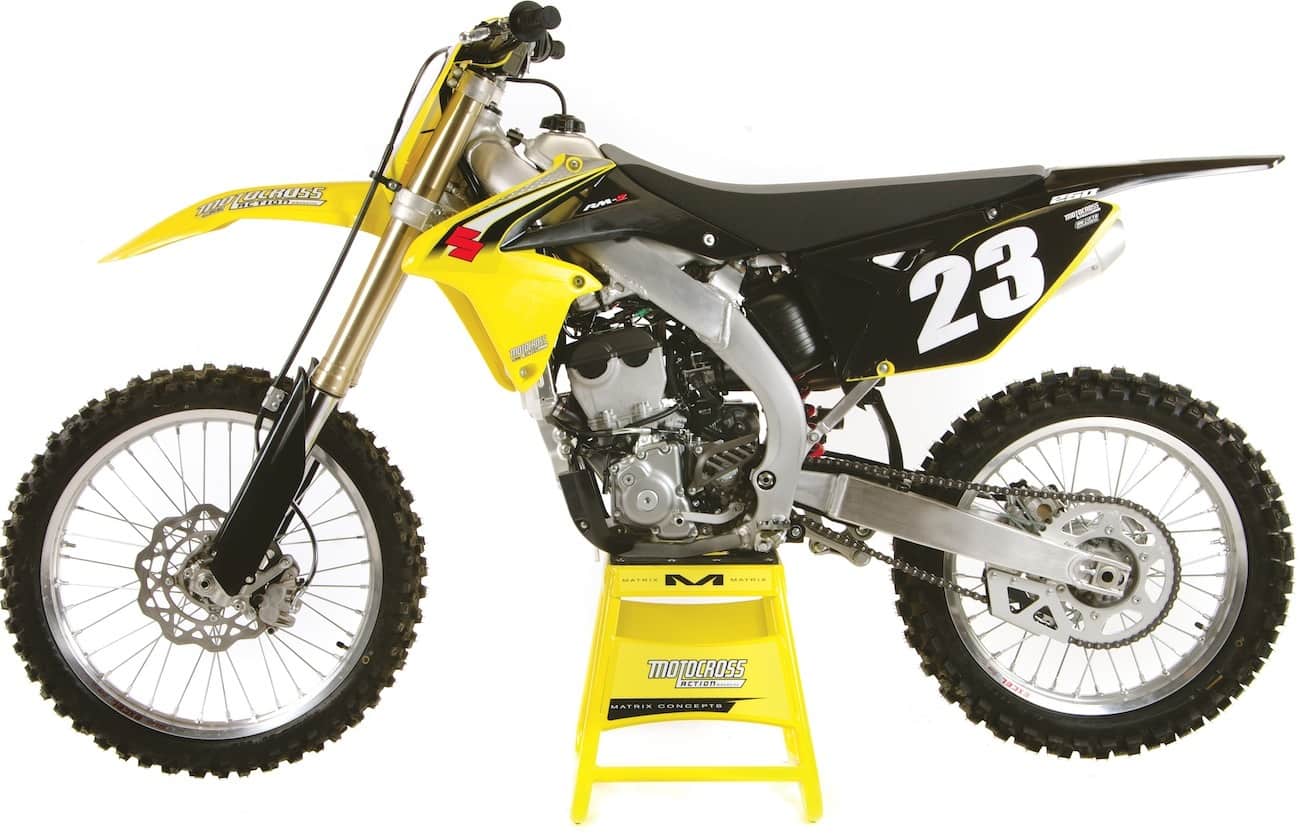

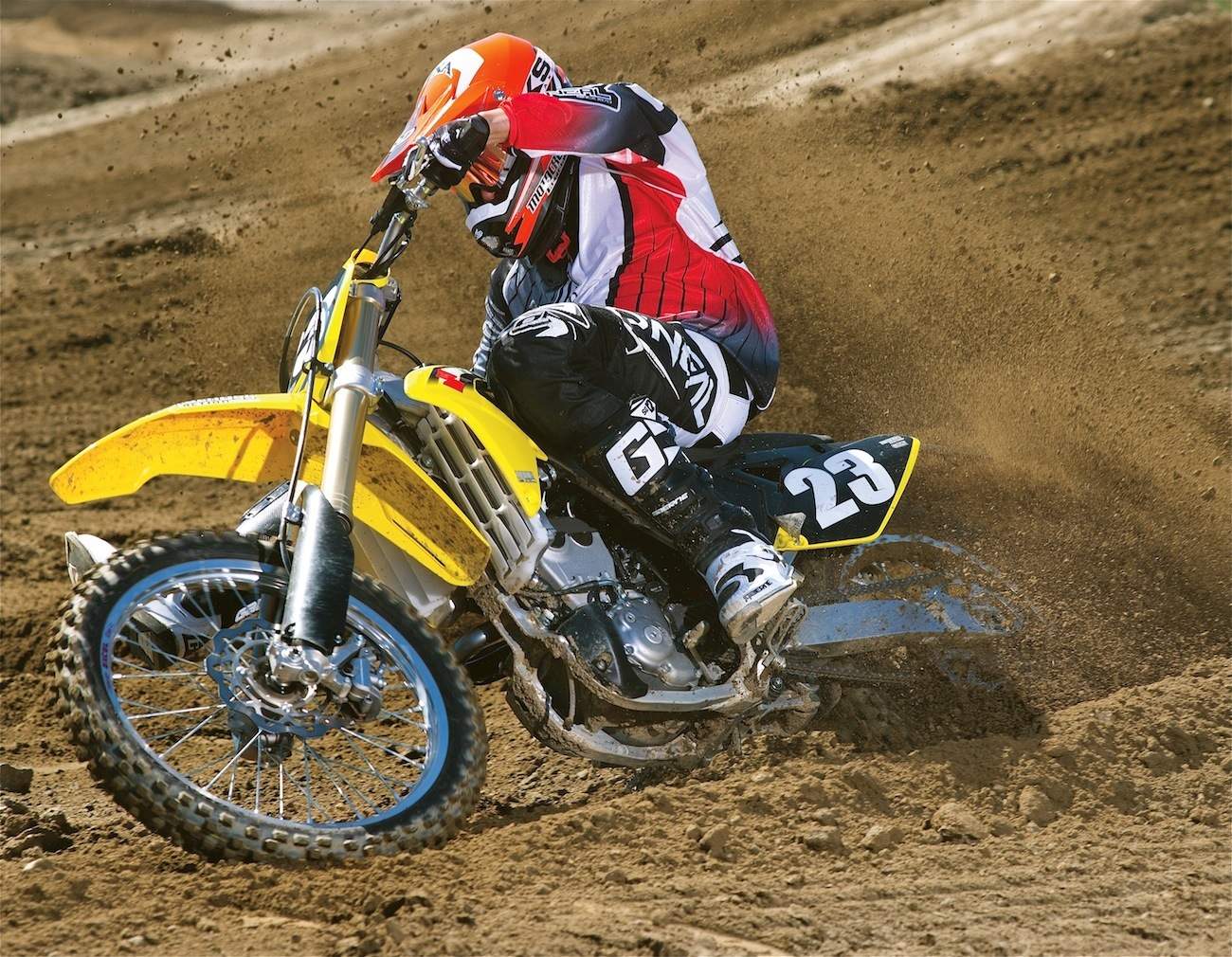
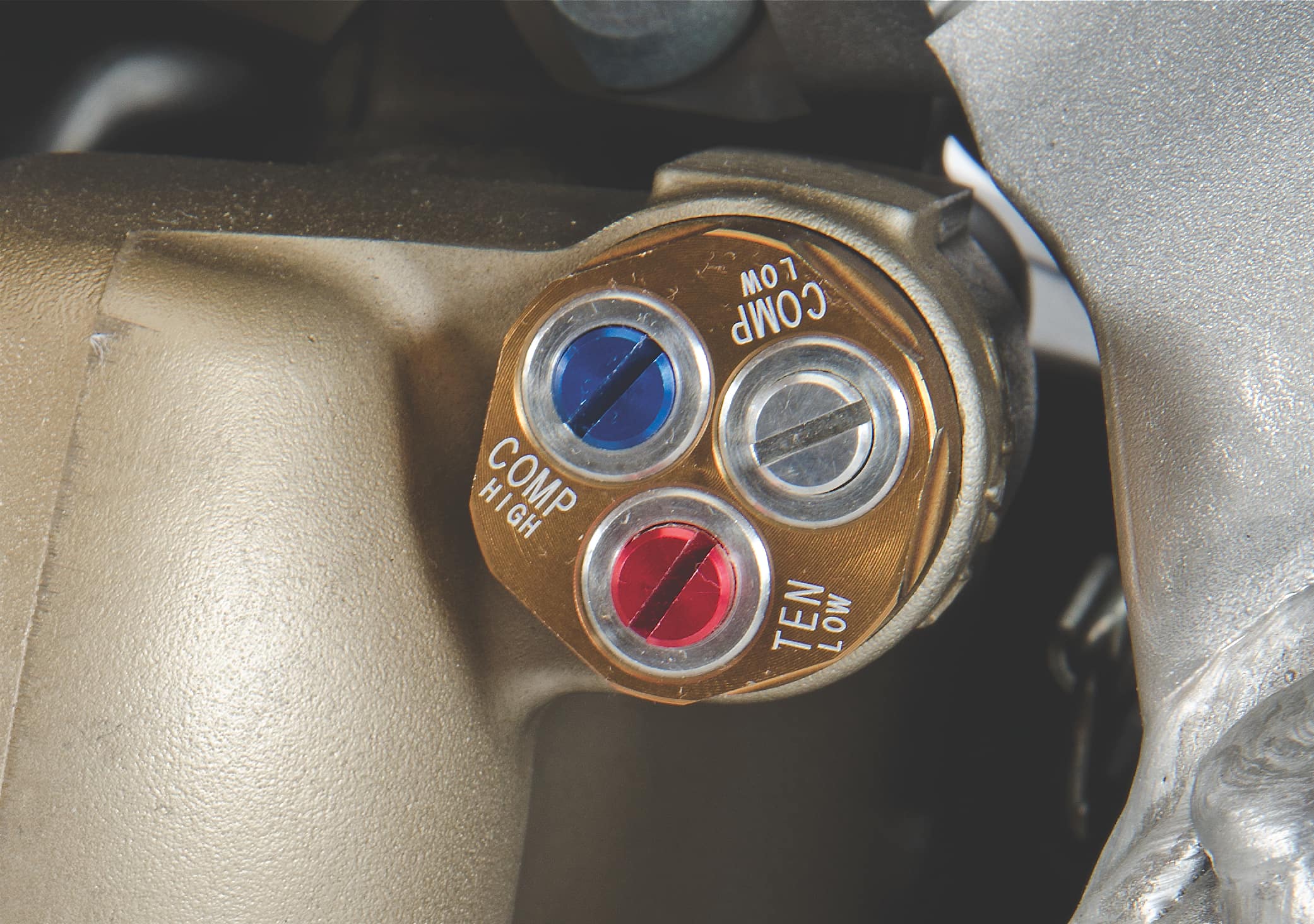



Comments are closed.